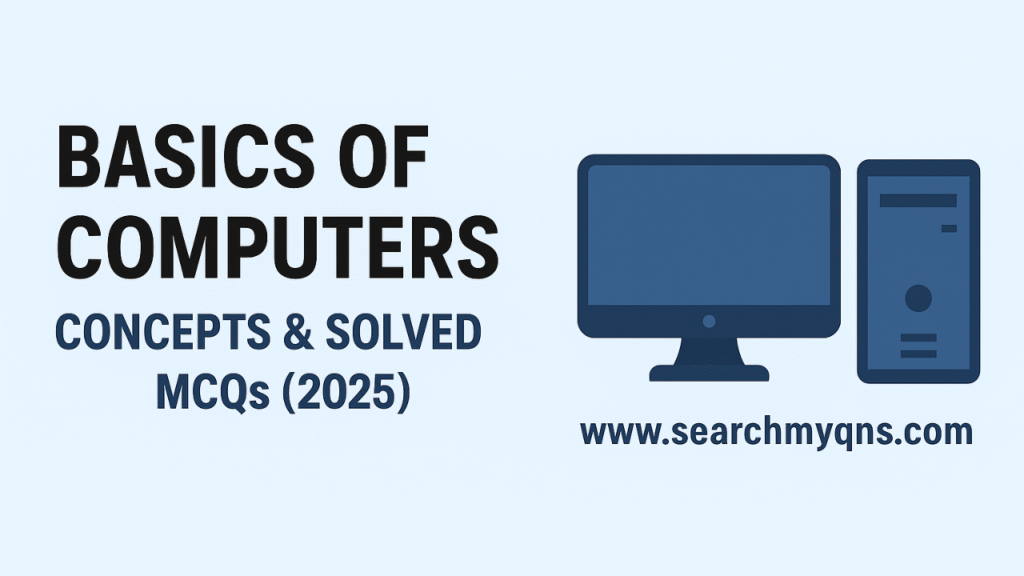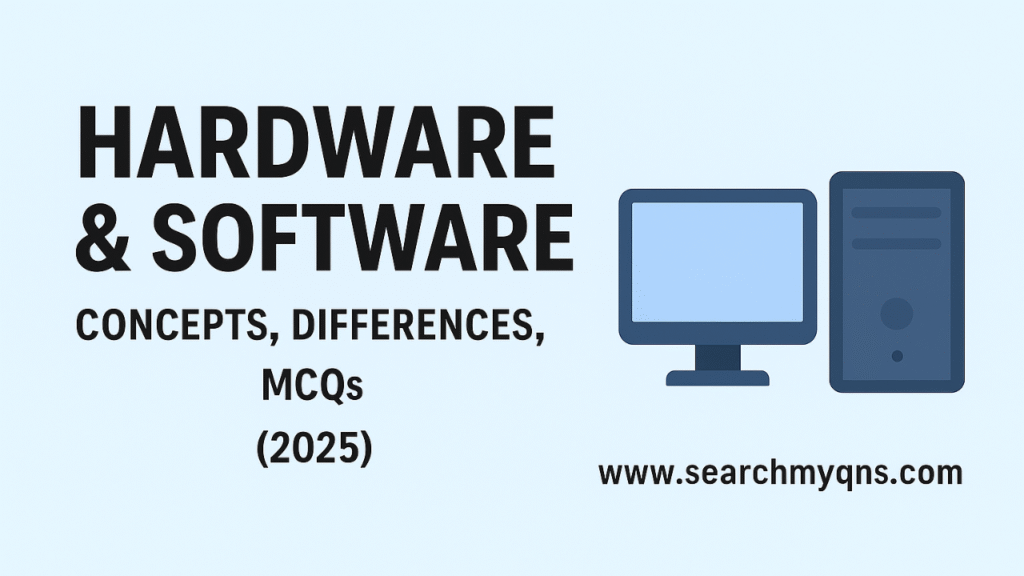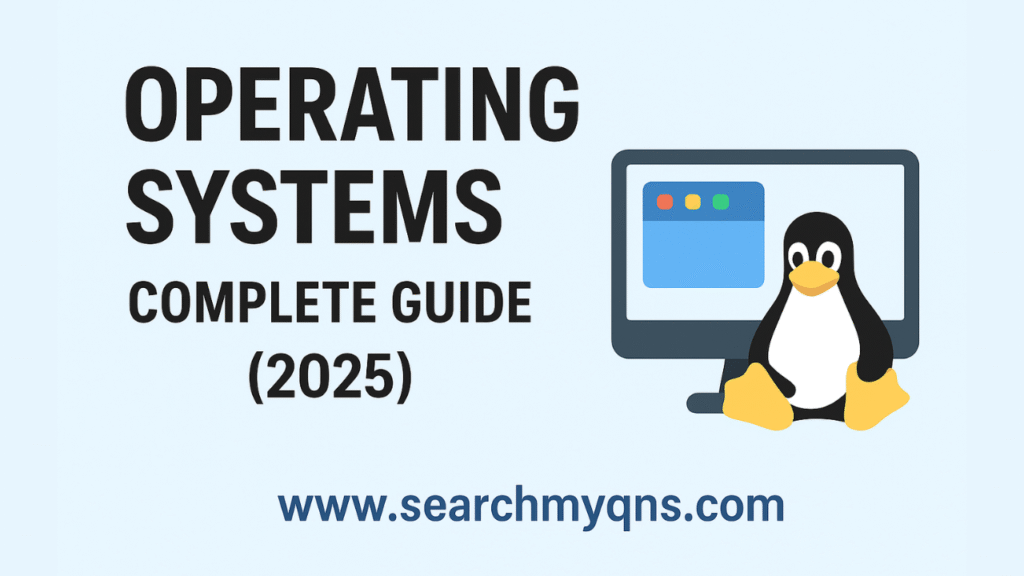Basics of Computers – Concepts & MCQs (2025)
Computers are an essential part of modern life, from education and business to entertainment and research. For aptitude tests, competitive exams, and job assessments, having a strong foundation in Basics of Computers is crucial. This guide covers the core concepts, types of computers, history, and solved MCQs to help you prepare effectively.
What is a Computer?
A computer is an electronic device that accepts input, processes data, stores information, and produces output as results.
- Input → Processing → Output → Storage is the basic cycle of a computer.
- Computers operate using both hardware (physical components) and software (programs & instructions).
Characteristics of Computers
- Speed – Performs millions of instructions per second.
- Accuracy – Produces precise results.
- Automation – Executes tasks without manual intervention.
- Storage – Stores huge amounts of data.
- Connectivity – Can connect and share information via networks.
Types of Computers
- Supercomputers – Extremely powerful, used for scientific research.
- Mainframes – Large-scale computers for big organizations.
- Minicomputers – Medium-sized, less common today.
- Microcomputers (PCs) – Laptops, desktops, personal devices.
- Mobile Devices – Smartphones, tablets.
Generations of Computers
- First Generation (1940–1956) – Vacuum tubes.
- Second Generation (1956–1963) – Transistors.
- Third Generation (1964–1971) – Integrated Circuits (ICs).
- Fourth Generation (1971–Present) – Microprocessors.
- Fifth Generation (Present & Future) – Artificial Intelligence.
Basic Components of a Computer
- Input Devices – Keyboard, Mouse, Scanner.
- Output Devices – Monitor, Printer, Speakers.
- CPU – Control Unit (CU), Arithmetic Logic Unit (ALU), Memory Unit.
- Storage – Primary (RAM, ROM) and Secondary (Hard Disk, SSD).
Solved MCQs
Q1. Who is known as the Father of Computers?
a) Charles Babbage
b) Alan Turing
c) John von Neumann
d) Bill Gates
Answer: a) Charles Babbage
Q2. Which is the brain of the computer?
a) RAM
b) Hard Disk
c) CPU
d) Monitor
Answer: c) CPU
Q3. The first generation of computers used:
a) Transistors
b) Vacuum Tubes
c) ICs
d) Microprocessors
Answer: b) Vacuum Tubes
Q4. Which device is used to convert hard copy to soft copy?
a) Printer
b) Monitor
c) Scanner
d) Keyboard
Answer: c) Scanner
Q5. Which memory is volatile?
a) ROM
b) RAM
c) Hard Disk
d) Pen Drive
Answer: b) RAM
Practice Questions
- Expand CPU and explain its components.
- Which generation of computers introduced Integrated Circuits?
- Define software and hardware with examples.
- What are the main differences between RAM and ROM?
- List the five generations of computers with examples.
Tips to Master Basics of Computers for Exams
- Revise generations of computers and their key technologies.
- Memorize full forms (CPU, RAM, ROM, BIOS, etc.).
- Practice computer abbreviations and shortcut keys.
- Solve previous years’ computer awareness MCQs.
FAQs:
Q1: Why are Basics of Computers important for exams?
Because many competitive exams test computer awareness as part of reasoning and technical ability.
Q2: What is the simplest definition of a computer?
A computer is an electronic device that processes data into meaningful information.
Q3: Which generation of computers used microprocessors?
The Fourth Generation.
Q4: What is the difference between Hardware and Software?
Hardware is the physical part of the computer; software is the set of instructions that run on it.
Q5: Which exam sections commonly include Basics of Computers?
Banking, SSC, Railway, UPSC, State Exams, and Technical Job Assessments.
Next Topic: Hardware & Software – Concepts & MCQs


